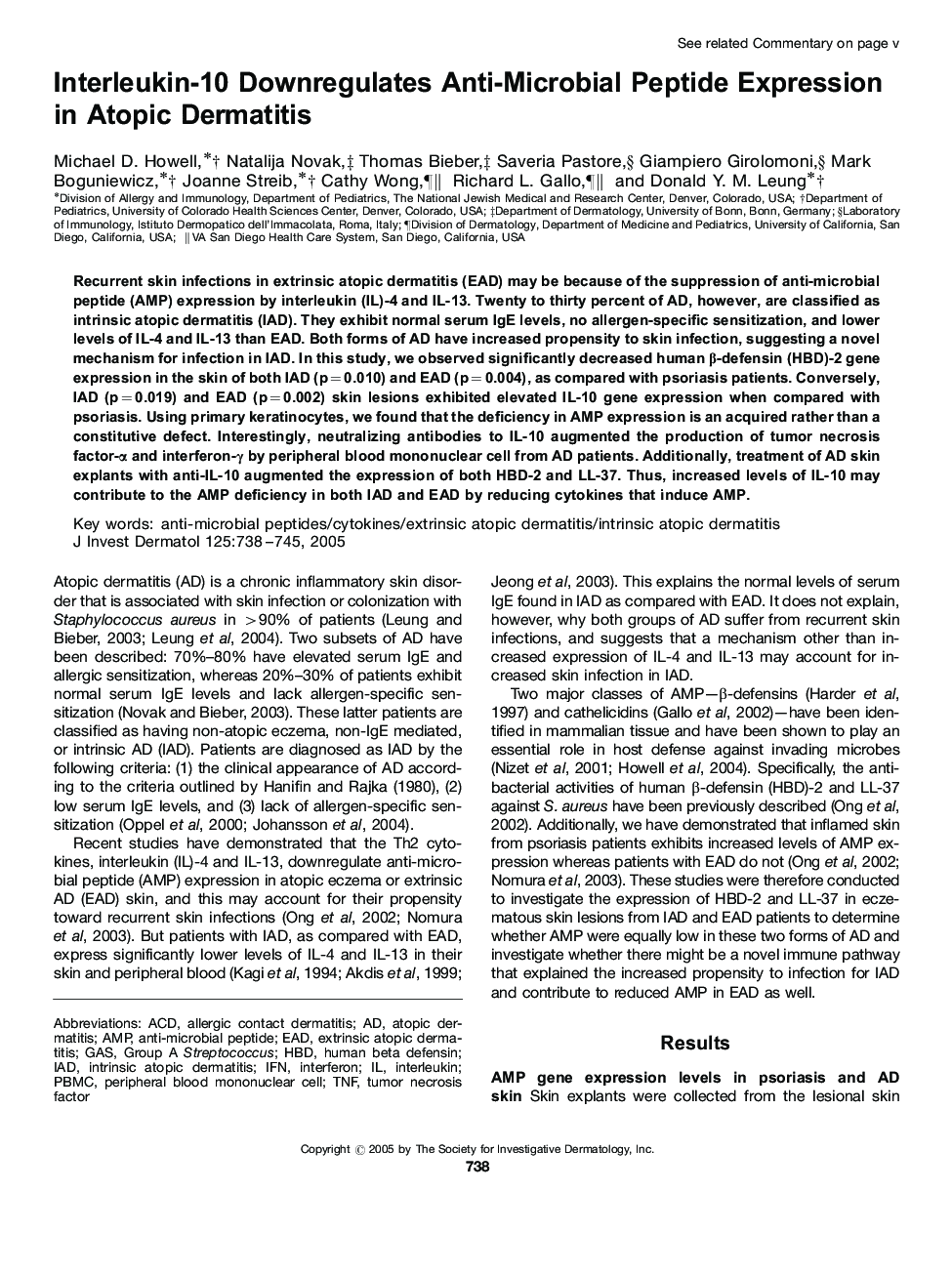| Article ID | Journal | Published Year | Pages | File Type |
|---|---|---|---|---|
| 9230193 | Journal of Investigative Dermatology | 2005 | 8 Pages |
Abstract
Recurrent skin infections in extrinsic atopic dermatitis (EAD) may be because of the suppression of anti-microbial peptide (AMP) expression by interleukin (IL)-4 and IL-13. Twenty to thirty percent of AD, however, are classified as intrinsic atopic dermatitis (IAD). They exhibit normal serum IgE levels, no allergen-specific sensitization, and lower levels of IL-4 and IL-13 than EAD. Both forms of AD have increased propensity to skin infection, suggesting a novel mechanism for infection in IAD. In this study, we observed significantly decreased human β-defensin (HBD)-2 gene expression in the skin of both IAD (p=0.010) and EAD (p=0.004), as compared with psoriasis patients. Conversely, IAD (p=0.019) and EAD (p=0.002) skin lesions exhibited elevated IL-10 gene expression when compared with psoriasis. Using primary keratinocytes, we found that the deficiency in AMP expression is an acquired rather than a constitutive defect. Interestingly, neutralizing antibodies to IL-10 augmented the production of tumor necrosis factor-α and interferon-γ by peripheral blood mononuclear cell from AD patients. Additionally, treatment of AD skin explants with anti-IL-10 augmented the expression of both HBD-2 and LL-37. Thus, increased levels of IL-10 may contribute to the AMP deficiency in both IAD and EAD by reducing cytokines that induce AMP.
Keywords
Related Topics
Health Sciences
Medicine and Dentistry
Dermatology
Authors
Michael D. Howell, Natalija Novak, Thomas Bieber, Saveria Pastore, Giampiero Girolomoni, Mark Boguniewicz, Joanne Streib, Cathy Wong, Richard L. Gallo, Donald Y.M. Leung,
